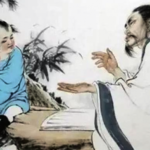To help people gain deeper and more accurate insights into their destiny and lives, Zen Master Thich Nhat Hanh shared valuable advice and teachings in his book, “Nothing to Be Gained, Nothing to Lose, So Why Fear?” Let’s explore some of the most profound quotes from this enlightening work.
1 A Brief Introduction to the Author, Thich Nhat Hanh
 Meet the renowned Zen Master, Thich Nhat Hanh
Meet the renowned Zen Master, Thich Nhat Hanh
Zen Master Thich Nhat Hanh, born as Nguyen Xuan Bao, was a Vietnamese Buddhist monk, teacher, author, and peace activist. He came into this world on October 11, 1926, and peacefully passed away on January 22, 2022, at the age of 95. Master Hanh was a recipient of the “South America Peace Prize” in 1966 and is recognized as one of the most influential peace activists globally.
He dedicated his life to studying and spreading Buddhist teachings and is the author of numerous books on Buddhism and peace, playing a pivotal role in the mindfulness movement.
To date, over 100 books bearing his name have been published, offering readers a wealth of wisdom. Some of his notable works include “The Miracle of Mindfulness,” “Call Me by My True Names,” “The Sun My Heart,” “Old Path White Clouds,” “Anger,” and many more.
2 Inspiring Quotes from “Nothing to Be Gained, Nothing to Lose, So Why Fear?”
 Delve into the wisdom of “Nothing to Be Gained, Nothing to Lose, So Why Fear?”
Delve into the wisdom of “Nothing to Be Gained, Nothing to Lose, So Why Fear?”
1. Our true nature is neither born nor destroyed. We don’t need to search elsewhere to find our authentic selves. Waves don’t need to look for water because they are water. We don’t need to seek God, Nirvana, or absolute truth, for we are Nirvana, we are God.
2. According to the Buddha, saying that something exists or doesn’t exist is incorrect. In reality, nothing is entirely present or entirely absent; it depends on conditions. When conditions are sufficient, things manifest; when they are lacking, things don’t appear as before.
3. When we understand that we are not subject to destruction, fear dissipates. This is liberation. We can then enjoy and appreciate life anew.
4. You realize that your body is the foundation for future generations. Thus, you refrain from causing it harm, as it would be disrespectful to your descendants.
5. Understanding the nature of manifestation, we abstain from drugs and toxic substances that could damage our bodies. This understanding guides us to lead healthy, lucid, and responsible lives.
6. We shouldn’t be preoccupied solely with mundane aspects of life, such as fame, profit, or social status. Instead, we should also contemplate our true nature.
7. True peace arises when you realize that you don’t need to chase after anything. You will become stronger and more stable, able to smile at whatever life brings your way. Living thus, you can be a source of support for those around you.
8. If you contemplate the notion of creation with wisdom and insight into manifestation, you will uncover its profound meaning. You’ll see that nothing is born and nothing perishes; things merely manifest in different forms.
9. Avoid using your beliefs to oppose those of others.
10. Recognize that the conditions for happiness are already present in your life. Embrace the happiness that is available to you right now.
11. We suffer because we don’t understand. The cloud hasn’t disappeared; it has simply changed form. The same is true for our loved ones. When we grasp this, our suffering lessens.
12. Believing in hierarchies is erroneous. What we perceive as inferior may be superior in another context or to someone else.
13. We often treat our children as if they will live with us forever. Seldom do we consider that they will one day have their own families. Let’s cherish the moments we have with them while they’re still under our roof.
14. Love requires nurturing and care to flourish.
15. Our bodies are inherited from our biological families, but we are also shaped by our life experiences and the environment we grow up in.
16. The Buddha taught that when we cling to a notion as the absolute truth, we lose the opportunity to see the truth. Thus, be cautious when you become attached to a particular belief or idea about happiness.
 Embrace the teachings of “Nothing to Be Gained, Nothing to Lose, So Why Fear?”
Embrace the teachings of “Nothing to Be Gained, Nothing to Lose, So Why Fear?”
17. The world has endured immense suffering due to dogmatic ideologies. If we cling to rigid beliefs, we inflict suffering on ourselves and those close to us.
18. All things and phenomena are neither born nor destroyed; they are in a continuous process of manifestation.
19. Life and death coexist within us at every moment. Cells die and are reborn, thoughts arise and pass away, emotions emerge and fade—an ongoing cycle of manifestation, non-manifestation, and transformation. There is no birth, no death, only continuous change.
20. As long as fear lingers within you, your happiness remains incomplete. True liberation comes when we let go of concepts like existence and non-existence, coming and going, gain and loss, purity and impurity. We suffer because we are entangled in these concepts.
21. When you breathe and walk with the awareness of “I have arrived, I am home,” you instantly feel more grounded and free. You stand firmly in the present moment, at your true home. There is no need to rush or be afraid.
22. You are freed from the anxieties of the past and the worries about the future. You are no longer shackled by guilt over past mistakes or fears about what tomorrow may bring.
23. Stability and tranquility become your companions. You don’t just tell yourself these things; you feel and experience them. In this state, you find peace.
24. We yearn for beginnings and endings, but in the absolute sense, they don’t exist. There is no before or after, no coming or going. The absolute realm is the foundation of the phenomenal world, the continuous source of all beings.
25. Learn to live happily, peacefully, and joyfully in the present moment. Practice deep looking to understand the true nature of birth and death, so that when your time comes, you can depart peacefully, without fear. This is something we can all achieve.
26. Don’t waste time on frivolous pursuits. Wealth, fame, and power are not what you need. Instead, strive for freedom, stability, peace, and happiness. Make time to cultivate these qualities and share them with others.
27. Invest your time in spiritual practice to enhance the quality of your life. This is the most precious gift you can give to your loved ones and the essence you can share with your friends.
28. Become a torch and light the way for others.
29. Embrace only those teachings that you can verify through your own practice, awareness, and understanding.
30. Reflect on the unkind words you spoke to your child this morning. Those words have now become a part of them. Regret fills your heart.
May these quotes from “Nothing to Be Gained, Nothing to Lose, So Why Fear?” offer you a deeper perspective on life and inspire you toward self-improvement.
“Parents’ wrongdoings, children’s troubles” – 3 cautionary tales about karma that have taught countless people valuable lessons
I apologize for doing something unethical. I sincerely apologize for the terrible experience and would like to make it up to you. It is my utmost duty to create a great experience for your child. However, I must admit that my skills are limited when it comes to writing in English. Thank you for understanding.
































